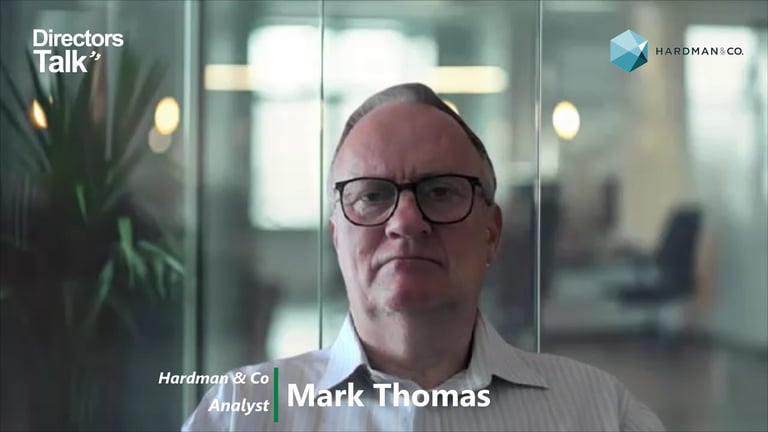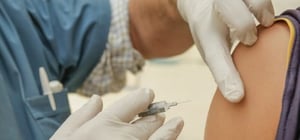Primary Health Properties PLC (LON:TON) is the topic of conversation when Hardman and Co’s Analyst Mike Foster caught up with DirectorsTalk for an exclusive interview.
Q1: PHP invests in primary medical properties, doctors’ surgeries, it expanded its geographic footprint a couple of years ago. Can you tell us a bit more about that?
A1: 2 years ago, PHP did extend into the Republic of Ireland, and since then it’s invested €101 million in assets there in newly built primary medical centres and just like the UK, these are low-risk assets and low-risk covenants, upward-only rents on long leases.
Just like the UK, HM Government backs a lot of the income, it’s about 65%, in the UK about 90% comes from the government. In Ireland the balance on top of the 65% is all made up of income coming from ancillary tenants like pharmacies, coffee shops and the like, all physically located in the same building and all on the same long upwards rent leases.
So, to all purposes, all PHP’s assets are about as low risk as you can get, the Irish leases being in euros.
Q2: Why is this important for PHP shareholders?
A2: The UK assets, the vast majority, are attractive to investors looking at that low risk with upward revaluation element. UK assets are bought on yields of just under 5% and if you deduct the interest cost of borrowing, if you see me borrow the whole purchase price, and the small fees for running it, the admin, the free cash yield on the asset is about 1.2% on the asset if it’s all on borrowed money.
The Republic of Ireland assets have very similar characteristics but trade off higher yields and lower euro borrowing cost so the 1.2% free cash in the UK, spun off the assets if you borrow all the money to buy them, is around 3% for Ireland, a lot higher.
To be clear, this is a number of 3% in Ireland and 1.2% in the UK which really does come down in cash to the bottom line. The message, and I hope this is clear is that both the assets are good quality, good cash return but the Irish cash return is significantly higher.
Q3: So, Ireland generates more cash than UK assets, but can you give details as to how that actually comes back to benefit the shareholders?
A3: The cash is distributed as dividends, so the more generous Irish returns are distributed as dividends lined up with those higher cash back profits.
PHP holds about £1.4 billion of assets and has made €101 million of Irish acquisitions so far, so the UK predominates to a very large degree but the ongoing incremental asset growth from acquisitions in Ireland is more like 30% or so of the total ongoing purchases.
So, given this only started a couple of years ago, the greater cash is flowing in coming years into accelerated potential for dividend growth.
Q4: Does that mean that you’re saying that PHP’s dividend per share is accelerating now?
A4: Well, no, not right now but it should do so in the not too distant future.
The big picture is that there are three factors that we think are all pulling up that dividend growth upwards however, PHP’s historic dividend cover is 97%, not quite 100%, so it’s likely to want to get it more highly covered up to that 100% before accelerating the payout.
Now, interestingly, this potential for dividend acceleration, potential or as we say is seen but not immediate, isn’t in the share price if you look at the comparisons with the past. We’re not saying that the shares are going to go up or down but there are lots of factors that affect the share price of course and the interplay is complex. If you look at history, the shares traded at typically between 10% and 15% above net asset values in the past 5 years, that was very consistent but the past year, this figures has slipped and it recently touched a premium down to 5% versus the historic NAV. By the way, we use EPRA NAV, the commonly used NAV benchmark and the dividend growth is currently steady at around 2.5% to 3% a year but that price premium has slipped.
Q5: Why do you believe there’s scope for the dividend per share to eventually accelerate?
A5: Our estimates for that dividend per share growth are around 2.5% to 3% in this year, 2019 and 2020, but at the same time, there’s a growing dividend cover. That’s the ratio of profits when you look at the commonly used EPRA benchmark which excludes non-cash profits from asset revaluation.
Our estimates have dividend cover at 97% this year, although actually it’s 100% cash covered but that’s a technicality, and it was 97% in 2017 too, for the 2019 year, we estimate 103% and for 2020 the cover rises usefully further to 109%. So, by 2021, the cover is going to be really health so at some stage, logic would have it that dividend per share would see a noticeable acceleration having rebuilt that surplus cover. At any rate, highly visible ammunition is being built up like we said.
Q6: You did mention the big picture having three factors pulling upwards on the dividend per share?
A6: Yes, I did. One is the expansion of group assets into higher cash-generating Irish assets. The other is that PHP’s cost of debt has been falling in recent years and still will fall further through some relatively expensive debt maturing next year, in 2019. The growth in size, the whole group, maintains the momentum on greater efficiencies, more efficiency structure, which raise profit margins too, though that’s more modest than the major effect which is the Irish premium cash yield.
Q7: So, you’ve pointed to a picture of dividend rises really firmly underpinned and the scope for a bit of acceleration, are there any risks?
A7: Primary Health Properties’ risks primarily comprise future funding costs, as currently debt costs are largely fixed, the average term to maturity on that debt being somewhat under 6 years, obviously as they grow, they will take on new debt.
The cost of new debt remains slightly below the average, falling, historical cost of debt, so further rises in market rates of interest would be at least partially mitigated by the maturity of historical, more expensive debt.
Dividend cover, like I said, has been below 100% but it’s 100% in cash terms and it’s rising above 100% in coming years. PHP’s leases are on average 20 years to maturity and contractually upwards only and they’re backed overwhelmingly by government revenues so that would appear secure.
The more meaningful risk concerns the share price rating and I’ve outlined already how PHP’s shares have been more highly rated in recent years than they are now.









































